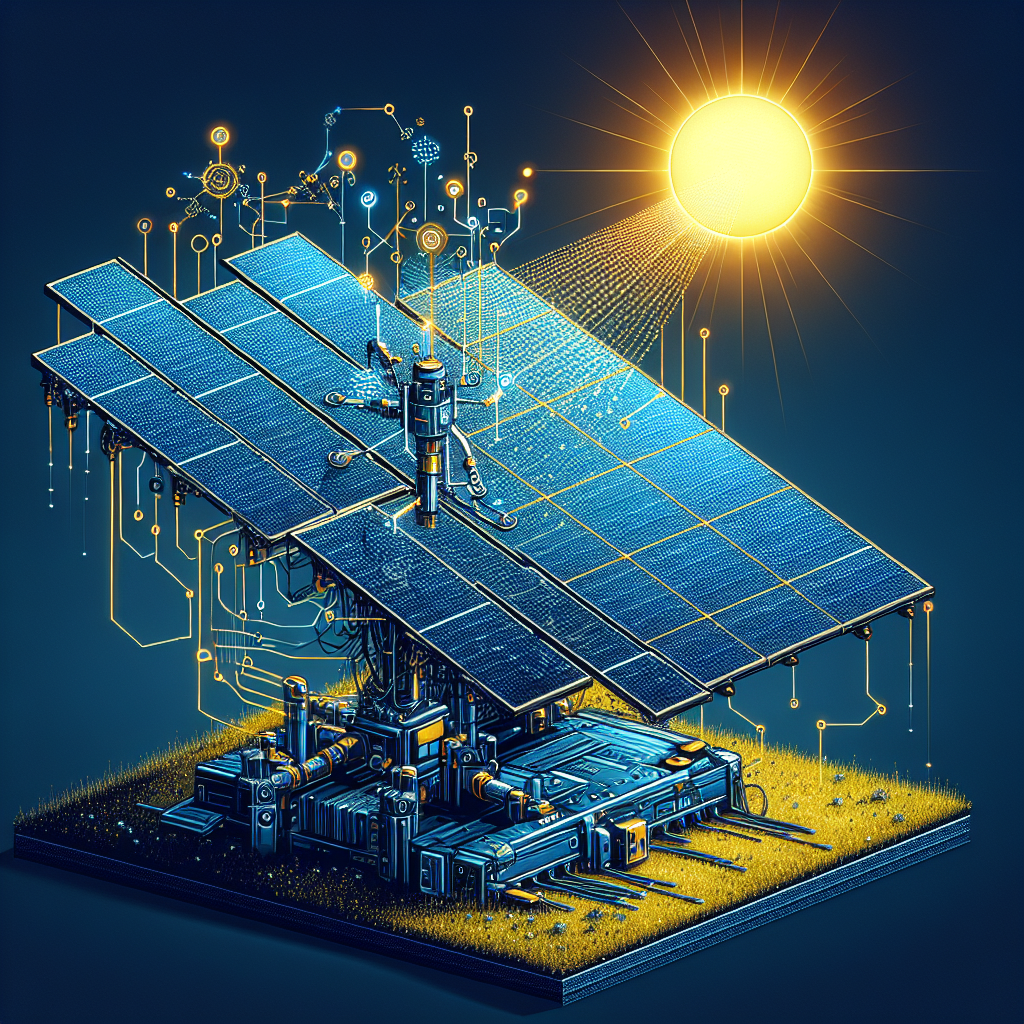Solar tracking systems are an essential component of solar energy generation systems. These systems automatically adjust the position of solar panels to track the movement of the sun throughout the day, maximizing the amount of sunlight that reaches the panels. This optimization leads to increased energy production and improved efficiency of solar power systems. In recent years, machine learning has been increasingly used to optimize solar tracking systems, leading to even greater gains in efficiency and energy production.
Machine learning, a subset of artificial intelligence, involves developing algorithms that can learn from and make predictions or decisions based on data. In the context of solar tracking systems, machine learning algorithms can analyze real-time data on the position of the sun, weather conditions, and the performance of the solar panels to make intelligent decisions about how to adjust the position of the panels for optimal energy production.
One of the key benefits of using machine learning in solar tracking systems is the ability to adapt to changing conditions in real time. Traditional solar tracking systems are often based on pre-set algorithms that do not take into account variations in weather conditions or the performance of the solar panels. Machine learning algorithms, on the other hand, can continuously analyze data and adjust the position of the panels to maximize energy production based on the current conditions.
There are several ways in which machine learning can be used to optimize solar tracking systems:
1. Predicting Solar Irradiance: Machine learning algorithms can analyze historical data on solar irradiance levels and weather conditions to predict future solar irradiance levels. By accurately predicting solar irradiance, the algorithms can adjust the position of the solar panels to maximize energy production throughout the day.
2. Dynamic Positioning: Machine learning algorithms can analyze real-time data on the position of the sun, weather conditions, and the performance of the solar panels to dynamically adjust the position of the panels for optimal energy production. This dynamic positioning allows the system to adapt to changing conditions and maximize energy production.
3. Fault Detection: Machine learning algorithms can analyze data on the performance of the solar panels to detect any faults or issues that may be affecting energy production. By identifying and addressing these issues in real time, the system can optimize energy production and ensure the long-term reliability of the solar tracking system.
4. Energy Forecasting: Machine learning algorithms can analyze historical data on energy production and weather conditions to forecast future energy production levels. By accurately predicting energy production, the algorithms can adjust the position of the solar panels to maximize energy production and optimize the overall performance of the system.
Overall, using machine learning to optimize solar tracking systems can lead to significant improvements in energy production, efficiency, and reliability. By continuously analyzing data and making intelligent decisions in real time, machine learning algorithms can maximize the performance of solar tracking systems and help to accelerate the adoption of solar energy as a clean and sustainable source of power.
FAQs:
Q: What are the benefits of using machine learning to optimize solar tracking systems?
A: Using machine learning can lead to increased energy production, improved efficiency, and enhanced reliability of solar tracking systems. Machine learning algorithms can adapt to changing conditions in real time, predict solar irradiance levels, dynamically adjust the position of the panels, detect faults, and forecast energy production levels.
Q: How does machine learning improve the performance of solar tracking systems?
A: Machine learning algorithms can analyze real-time data on the position of the sun, weather conditions, and the performance of the solar panels to make intelligent decisions about how to adjust the position of the panels for optimal energy production. This optimization leads to increased energy production and improved efficiency of solar tracking systems.
Q: What are some of the challenges of using machine learning to optimize solar tracking systems?
A: Some of the challenges of using machine learning in solar tracking systems include the need for accurate data collection, the complexity of developing and implementing machine learning algorithms, and the potential for overfitting or underfitting the algorithms. However, with proper data collection and algorithm development, these challenges can be overcome to achieve significant improvements in energy production and efficiency.
Q: How can I implement machine learning in my solar tracking system?
A: To implement machine learning in your solar tracking system, you will need to collect and analyze data on solar irradiance levels, weather conditions, and the performance of the solar panels. You will also need to develop machine learning algorithms that can make intelligent decisions about how to adjust the position of the panels for optimal energy production. Working with a team of experts in machine learning and solar energy systems can help you to successfully implement machine learning in your solar tracking system.

